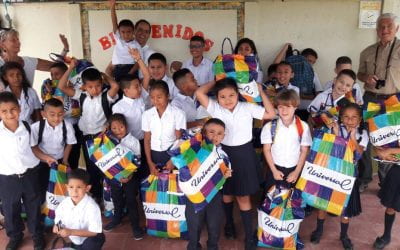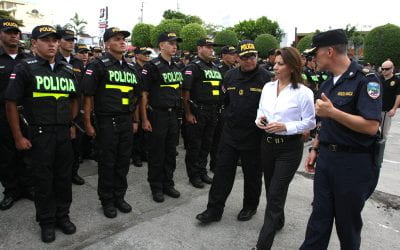Yes, Costa Rica is Different
A Successful Experience at Risk
Everyone knows her as “Doña Nena.” At 75 years old, she has been a leader for half a century in the community of Luzón, in Matina—one of the poorest counties in Costa Rica—on the Caribbean coast, 84 miles northeast of the capital: San José.
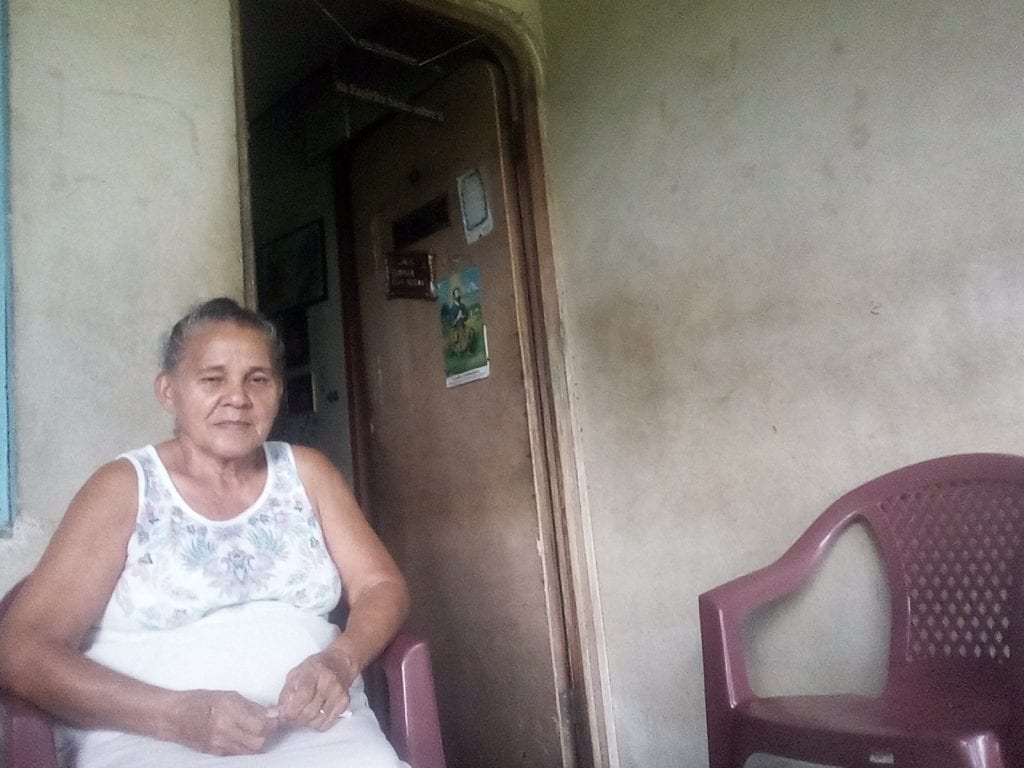
Courtesy of Mauricio Herrera
She has seen the evolution of Matina from a remote hamlet surrounded by banana trees, mosquitoes and disease to another: still surrounded by banana trees but now with electricity, potable water, an elementary school, a high school, telecommunications, internet, paved streets, a soccer field, labor laws, a health clinic and courts of justice.
Her life has run parallel to the period of great social and political reforms that generated better living conditions in Costa Rica, with its lights and shadows: a country that achieved greater economic, political and social stability than its neighbors; but without ceasing to be a developing society, which now faces the risk of regression in social, environmental, democratic and crime indicators.
“When I was a little girl, this was a forgotten town; barefoot children, without education or health. I learned to read at the age of 18 because there was no school. In the 70s, the ICE (Costa Rican Electricity Institute) installed electricity, and then the (Institute of) Aqueducts installed water. And so on, little by little. Now we are fighting for the Ministry of Education to hire a computer teacher for the school. We have the computers, but not the teacher, and we need him,” says Fuentes, who has been President of the Board of Education for 50 years, and leader of the Development Association and the Health Board in Luzón.
María Elena Fuentes Rodríguez (her full name) was born in August 1948, four months after the end of the last Costa Rican civil war and four months before the abolition of the army.
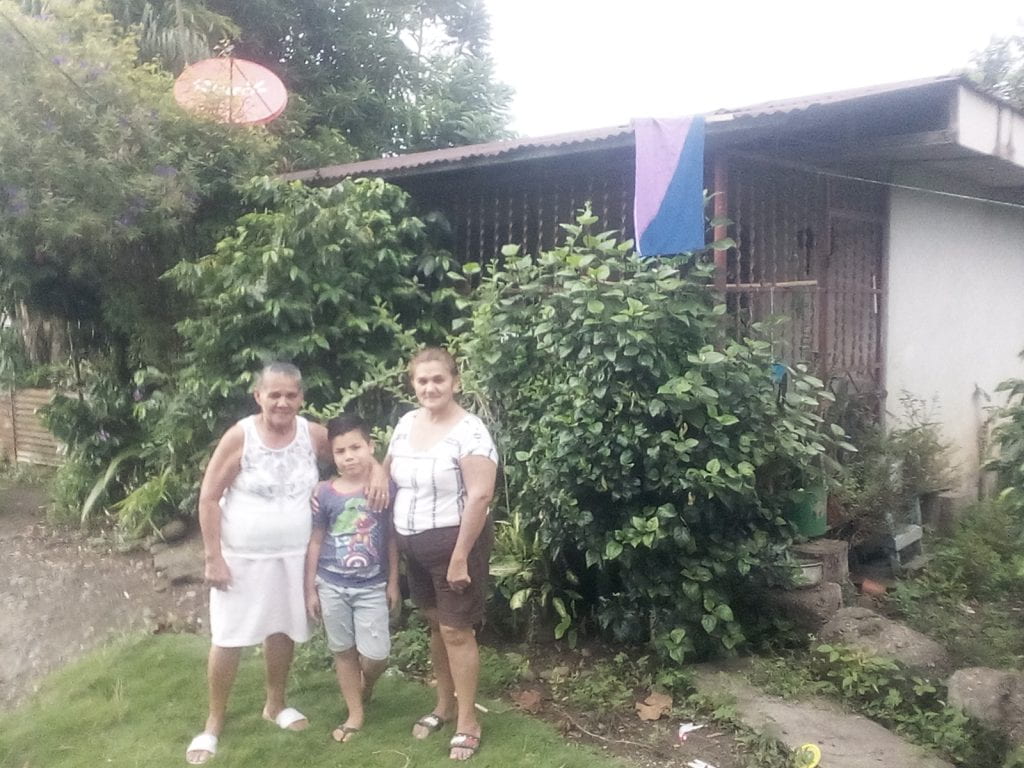
Courtesy of Mauricio Herrera
Doña Nena does not remember seeing a soldier in her life, she has not suffered hunger but neither has she had money for luxuries. She and her adult children still struggle to make ends meet. But she says the town’s biggest problem is not having a computer teacher.
Why has a country that shares similar cultural, historical, religious, social and ethnic roots to its neighbors performed better socially, economically and politically? Why has it not suffered the traumas of other nations, coups and recent civil wars? Why are its poverty, health, and education indicators relatively better? Why is it that in a small town in one of the poorest cantons in the country, the main problem is not having water, electricity or a doctor, but getting a specialized teacher?
I have asked myself these questions many times, as a journalist who has covered news in Central America. To seek answers, I also interviewed experts knowledgeable about this country of 19,691square miles and 5.1 million inhabitants, such as former President Luis Guillermo Solís, former International Criminal Court judge Elizabeth Odio, anthropologist Cristiana Figueres, and development expert Alberto Mora.
The short answer is this: since the 1940s, the abolition of the army and the construction of social, democratic and public service institutions allowed more money to be transferred to health, education and infrastructure, gave credibility to the election of presidents and authorities, and built a stronger middle class with a better quality of life. These conditions produced social peace, institutional stability and long-term state policies that allowed for greater economic growth and social development.
Why are these positive achievements at risk? Why is Costa Rica not a developed country despite these historical achievements?
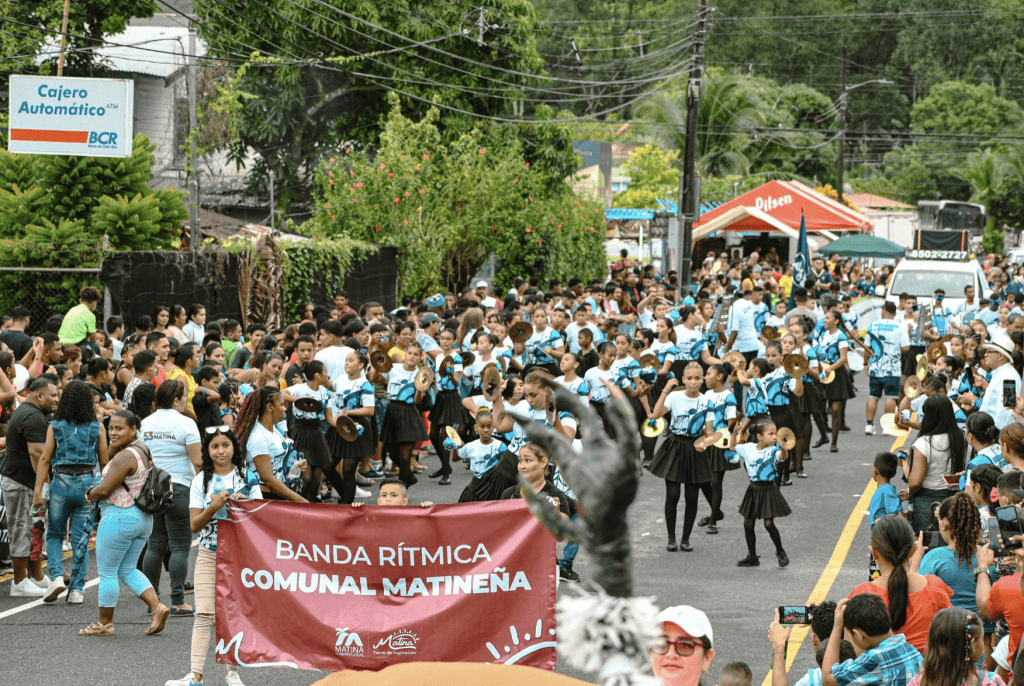
Credit: “MUNICIPALIDAD DE MATINA”. Photos of community fiestas
The Figures Confirm the Differences
Let’s start with some data: In a region characterized by political instability, how many coups, wars or armed uprisings has Costa Rica had since the middle of the last century: zero. How many consecutive clean, peaceful elections with legitimate rulers have there been since 1953: all of them, 18.
The United Nations Human Development Index of 2023, which weighs data on life expectancy, education, and economic growth, places Costa Rica among the countries with a very high level of human development, in the 64th position among 176.
Overall poverty in Costa Rica is the lowest in the region and fluctuates around 20%; 100% of the population has access to electricity and 95% of households have drinking water, directly from the pipe. Life expectancy is among the highest: 80.8 years, while in Latin America the average is 75 years.
Another revealing figure is that while GDP per capita tripled from US$1,808 in 1990 to US$13,365 in 2022, Costa Rica’s forest cover almost doubled to 59%, which speaks volumes about the country’s commitment to environmental protection, ecotourism and export diversification. In addition, by 2022, 98% of the country’s electricity was produced from renewable sources, such as water, geothermal energy, wind and solar.
For Alberto Mora, an expert in development policies, “If we look at the socioeconomic indicators, there are important differences: the Costa Rican economy is more sophisticated and diversified, more linked to international markets, with a notable capacity to attract direct investment and tourism.”
So, considering internationally validated data, it is possible to affirm that Costa Rica is indeed a different country. Now it is up to us to explain why.
Historical Decisions
Credit: “MUNICIPALIDAD DE MATINA”. Photos of community fiestas
The former president and expert in Central American history, Luis Guillermo Solís, believes that the set of social and political reforms that the country achieved in the mid-20th century was the great turning point that marked a different destiny for the country.
Between 1940 and 1948, a very “sui generis” political alliance between a Social Christian government, the Catholic Church, and the Communist Party, achieved a set of reforms that transformed Costa Rica. The creation of the public health system, the introduction of social guarantees in the Political Constitution, the Labor Code and public university education— among other reforms—date from that period.
Then, in 1948, an armed movement led by the social democrat José Figueres Ferrer—who fought for the respect of the popular vote in elections—overthrew the government of the social alliance in a two-month revolution. But when he triumphed, instead of reversing the social reforms, he consolidated and deepened them, nationalized the banks, founded the Costa Rican Electricity Institute and created the Supreme Electoral Tribunal, among other reforms.
Conservative sectors of the extreme right wing allied with Figueres felt betrayed, labeled him a “communist” and organized coup d’état attempts against his government. Figueres’ reaction to the coup threats was unusual and with historical vision: he abolished the army, turned the barracks into museums, and its budget was gradually transferred to social investment.
According to the former president of the Inter-American Court of Justice, Elizabeth Odio, since the 19th century, Costa Rica has given strong emphasis to public education and health, but it is in the mid-20th century that the country takes a different direction.
The World Bank calls Costa Rica a “success story.” In its reports on Costa Rica from 2016 to 2023, the World Bank concludes that Costa Rica’s development model is based on four fundamental pillars: its long-standing democracy, an ambitious social pact, a model of economic openness and its green brand.
According to a 2016 World Bank report, “with the abolition of the army, the country had more resources to invest in providing public and social services for the entire population.” Since the 1950s, investment in education, health, and social security went from about three percent of the GDP to more than 20 percent in the second decade of the 21st century.
For former President Solís, unlike what happened in other Central American countries, the reforms of the 1940s in Costa Rica were successful and consolidated in successive governments, even though they were ideological antagonists. In his opinion, “… the consolidation of social reforms allowed the construction of a society with a strong predominance of the middle class.”
Cristiana Figueres has been the executive secretary of the United Nations Framework Convention on Climate Change and knows in depth the evolution of Costa Rica’s environmental policies. When we talked about this topic, she added two other factors that make a difference: investment in environmental protection and the promotion of ecotourism.
In the 1970s, Costa Rica established the national park system and currently more than 25% of the country’s territory is under some form of protection. Tourism revenues are equivalent to 8% of GDP and 80% of tourists visit national parks.
“Fifty years ago as a country, we realized that investing in biodiversity is not a luxury but an investment. It was not only an environmentally responsible decision but an economic decision: we protect what feeds us,” says Figueres.
A model at risk
But why has a country that built such advantageous conditions not achieved economic and social development?
The interviewees agree on a series of factors such as limited national industrialization, lack of major national agreements to renew the welfare state model, corruption, inefficient public spending, lack of modernization of a state that is still very large and centralized, but at the same time, the implementation of neoliberal policies that weaken public services and concentrate wealth.
“We have not been able to forge national agreements that would allow us to update the premises of the Costa Rican development model, forged in the last century” says Alberto Mora.
Elizabeth Odio and Luis Guillermo Solís attribute the deterioration of the growth with equity model to neoliberal reforms implemented since the end of the 20th century, which in their opinion have worsened under the current government.
“The country has had improvements in the fiscal balance, but this has been done at the expense of social issues. We are deteriorating two fundamental pillars: health and education,” says Odio.

Credit: “MUNICIPALIDAD DE MATINA”. Photos of community fiestas
Driven by reforms in previous years, the Costa Rican state had more income than expenses in 2022 and 2023, something that had not happened since 2007, and the fiscal deficit (including interest payments) went from 8.3% of GDP in 2020 to 3.3% of GDP in 2023.
“The Costa Rican economy is in excellent health, in a way that I never cease to be surprised,” said President Rodrigo Chaves at a press conference on February 14.
Although production and national income are increasing, while the fiscal deficit is decreasing, poverty is stagnant and inequality has increased, as recognized by the World Bank.
“Income inequality has Costa Rica trapped,” said economist Sandro Zolezzi. “Our income inequality per household reached 11.5 in 2022. There is no way to sustain that level of inequality over time. We must find and attack the possible reasons for that difference,” warned Zolezzi in a publication of the think tank Academia de Centroamérica.
The deterioration seems to have worsened under the current government. The 2024 budget for social investment is the lowest in a decade and represents just 9.7% of GDP. Budget cuts have been significant in the education, health, anti-poverty, and public infrastructure construction budgets. The fiscal crisis is being transformed into a social crisis.
Among the member countries of the Organization for Economic Cooperation and Development (OECD), of which Costa Rica is a member, the average social investment is 21.1% of GDP.
In addition to all the above, crime has skyrocketed, and the homicide rate went from 12 per 100,000 inhabitants in 2022 to 17 per 100,000 inhabitants in 2023.
The government attributes the increase in violence to the increase in international drug trafficking, denies that there is a social deterioration, and describes the decisions to contain spending as “responsible.”
Last December, President Chaves told Bloomberg News: “Costa Rica is the bright spot in Latin America today in terms of stability, growth and macroeconomic performance (…). We have created a virtuous circle of clearly responsible fiscal policy; a pro-business environment and businesses are responding to that.”
Doña Nena is a supporter of President Chaves and supports his administration, as do more than half of Costa Ricans. In addition to a new computer teacher at her school, Luzon needs a child care center for toddlers. She is also concerned that there is more crime in the community but is confident that the government will do what is necessary to solve Matina’s and the country’s problems.
Costa Rica is at a crossroads, where it has the conditions to make the leap in terms of development and economic prosperity, but it could also go backward and lose its advantages if it makes the wrong decisions.
Mauricio Herrera-Ulloa was a Nieman Fellow at Harvard (2007). He received the Moors Cabot Award Special Citation (2005) and was the Minister of Communication of Costa Rica between 2015 and 2018.
Costa Rica Sí es diferente, pero…
Una experiencia exitosa en riesgo
Todos la conocen como “Doña Nena” y es la líder del pueblo. Tiene 75 años y durante medio siglo ha sido dirigente en la comunidad de Luzón, en el cantón de Matina, uno de los más pobres de Costa Rica, en la costa del Caribe, a 136 kilómetros al noreste de la capital, San José.

Courtesy of Mauricio Herrera
Ella ha visto la evolución de Matina desde un caserío remoto rodeado de bananales, mosquitos y enfermedades a otro, siempre rodeado de bananales pero ahora con electricidad, agua potable, escuela, colegio secundario, telecomunicaciones, internet, calles asfaltadas, plaza de futbol, leyes laborales, una clínica de salud y tribunales de justicia.
Su vida ha corrido paralela al periodo de grandes reformas sociales y políticas que generaron mejores condiciones de vida en Costa Rica, con sus luces y sombras: un país que logró una mayor estabilidad económica, política y social que sus vecinos, pero sin dejar de ser una sociedad en vías de desarrollo, que ahora enfrenta el riesgo del retroceso en indicadores sociales, ambientales, democráticos y de criminalidad.
“Cuando era chiquilla esto era un pueblo olvidado, niños descalzos, sin educación ni salud. Yo aprendí a leer a los 18 años porque no había escuela. En los años setenta el ICE (Instituto Costarricense de Electricidad) instaló la luz, después el (Instituto de) Acueductos puso el agua. Y así poco a poco todo. Ahora luchamos para que el Ministerio de Educación contrate un profesor de cómputo en la escuela. Tenemos las computadoras, pero no el maestro, y lo necesitamos”, cuenta ella, que ha sido Presidenta de la Junta de Educación por 50 años, dirigente de la Asociación de Desarrollo y de la Junta de Salud en Luzón.
María Elena Fuentes Rodríguez, su nombre completo, nació en agosto de 1948, cuatro meses después de finalizada la última guerra civil costarricense y cuatro meses antes de la abolición del ejército.

Courtesy of Mauricio Herrera
Doña Nena no recuerda haber visto un soldado en su vida, no ha sufrido hambre pero tampoco ha tenido dinero para lujos. Ella y sus hijos adultos todavía luchan para llegar a fin de mes. Pero dice que el problema mayor del pueblo es no tener un maestro de cómputo.
¿Por qué un país que comparte similares raíces culturales, históricas, religiosas, sociales y étnicas que sus vecinos ha tenido un mejor desempeño social, económico y político? ¿Por qué no ha sufrido los traumas de otras naciones, golpes de Estado, guerras civiles recientes? ¿Por qué sus indicadores de pobreza, salud, educación son relativamente mejores? ¿Por qué en un pueblito de uno de los cantones más pobres del país el principal problema no es tener agua, electricidad o un médico sino conseguir un maestro especializado?
Estas preguntas me las he hecho muchas veces, como periodista que ha cubierto noticias en América Central. Para buscar respuestas, también entrevisté a expertos conocedores de este país con 51.000 kilómetros cuadrados y 5,1 millones de habitantes. como el expresidente Luis Guillermo Solís, la exjueza de la Corte Penal Internacional, Elizabeth Odio, la antropóloga, Cristiana Figueres y el experto en desarrollo, Alberto Mora.
La respuesta en breve es esta: desde los años cuarenta del siglo XX, la abolición del ejército y la construcción de instituciones sociales, democráticas y de servicios públicos permitió trasladar más dinero a salud, educación e infraestructura, dar credibilidad a la elección de presidentes y autoridades y construir una clase media más fuerte y con mejor calidad de vida. Esas condiciones produjeron paz social, estabilidad institucional y políticas de Estado de largo plazo que permitieron mayor crecimiento económico y desarrollo social.
¿Por qué esos logros positivos están en riesgo? ¿Por qué a pesar de esos logros históricos Costa Rica no es un país desarrollado?

Credit: “MUNICIPALIDAD DE MATINA”. Photos of community fiestas
Las cifras confirman que hay diferencias
Comencemos con algunos datos: En una región caracterizada por la inestabilidad política ¿Cuántos golpes de Estado, guerras o levantamientos armados ha tenido Costa Rica desde la mitad del siglo pasado?: Cero. ¿Cuántas elecciones consecutivas limpias, pacíficas, con gobernantes legítimos ha habido desde 1953?: Todas, 18.
El Ìndice de Desarrollo Humano de Naciones Unidas de 2023, que pondera datos de esperanza de vida, educación y crecimiento económico, coloca a Costa Rica entre los países con muy alto desarrollo humano, en la posición 64 entre 176. Es uno de los primeros de Latinoamérica.
La pobreza general en Costa Rica es la más baja en la región y fluctúa alrededor del 20%; el 100% de la población tiene acceso a electricidad y el 95% de los hogares tiene agua potable, directamente del tubo. La esperanza de vida es de las más altas: 80,8 años, mientras que en Latinoamérica el promedio es de 75 años.
Otra cifra reveladora es que mientras el PIB per cápita se triplicó, de US$1.808 en 1990 a US$13.365 en 2022, la cobertura boscosa de Costa Rica casi se duplicó, hasta el 59%, lo que habla muy bien de la apuesta que el país hizo a favor de la protección ambiental, el ecoturismo y la diversificación de exportaciones. Además, hasta 2022, el 98% de la electricidad nacional era producida con fuentes renovables, como agua, geotermia, viento y sol.
Para Alberto Mora, experto en políticas de desarrollo, “si vemos los indicadores socioeconómicos claramente hay diferencias importantes: la costarricense es una economía más sofisticada y diversificada, más vinculada con los mercados internacionales, con una notable capacidad para atraer inversión directa y de turismo”.
Entonces, a la luz de los datos internacionalmente validados, es posible afirmar que Costa Rica sí es un país diferente. Ahora nos corresponde explicarnos el por qué.
Decisiones históricas

Credit: “MUNICIPALIDAD DE MATINA”. Photos of community fiestas
Pero ¿Por qué un país que construyó condiciones ventajosas no ha alcanzado el desarrollo económico y social?
Los entrevistados coinciden en una serie de factores como la limitada industrialización nacional, falta de grandes acuerdos nacionales que renueven el modelo de Estado benefactor, corrupción, gasto público ineficiente, falta de modernización de un Estado que sigue siendo muy grande y centralizado, pero a la vez, la implementación de políticas de corte neoliberal que debilitan los servicios públicos y concentran la riqueza.
“No hemos sido capaces de forjar acuerdos nacionales que nos permitan actualizar las premisas del modelo de desarrollo costarricense, forjados en el siglo pasado” afirma Alberto Mora.
Elizabeth Odio y Luis Guillermo Solís atribuyen el deterioro del modelo de crecimiento con equidad a reformas de corte neoliberal implementadas desde finales del siglo XX, que en su opinión se han agravado en el gobierno actual.
“El país ha tenido mejoras en el balance fiscal, pero se ha hecho a costa de lo social. Estamos deteriorando dos pilares fundamentales: la salud y educación”, afirma Odio.
Impulsado por reformas ocurridas en años anteriores, el Estado costarricense tuvo más ingresos que gastos en 2022 y 2023, algo que no ocurría desde el 2007, y el déficit fiscal (incluyendo el pago de intereses) pasó de 8,3% del PIB, en 2020, a 3,3% del PIB en 2023.
“La economía costarricense goza de una excelente salud, de una manera que yo no dejo de sorprenderme”, dijo el Presidente Rodrigo Chaves, en conferencia de prensa el pasado 14 de febrero.

Credit: “MUNICIPALIDAD DE MATINA”. Photos of community fiestas
Aunque la producción y los ingresos nacionales aumentan, a la vez que desciende el déficit fiscal, la pobreza está estancada y la desigualdad aumentó, tal como lo reconoce el Banco Mundial.
¨La desigualdad de ingreso tiene a Costa Rica atrapada¨, afirmó el economista Sandro Zolezzi. “Nuestra desigualdad de ingreso por hogar alcanzó 11,5 veces en el 2022. No hay manera de sostener ese nivel de desigualdad en el tiempo. Debemos encontrar y atacar las posibles razones de esa diferencia”, advirtió Zolezzi en una publicación del centro de pensamiento Academia de Centroamérica.
El deterioro parece haberse agravado en el gobierno actual. El presupuesto para la inversión social de 2024 es el más bajo en una década y representa apenas el 9,7% del PIB. Los recortes presupuestarios han sido significativos en los presupuestos de educación, salud, lucha contra la pobreza y construcción de infraestructura pública. La crisis fiscal está siendo transformada en una crisis social.
Entre los países miembros de la Organización para la Cooperación y el Desarrollo Económicos (OCDE), de la cual Costa Rica es parte, el promedio de inversión social es 21,1% del PIB.
Sumado a todo lo anterior, la criminalidad se disparó y la tasa de homicidios paso de 12 por cada 100.000 habitantes en 2022 a 17 por 100.000 habitantes en 2023.
El gobierno atribuye el incremento de la violencia al incremento del narcotráfico internacional, niega que haya un deterioro social y califica las decisiones de contención del gasto como “responsables”.
En diciembre anterior, el Presidente Chaves dijo a Bloomberg News: “Costa Rica es el punto brillante en América Latina hoy en términos de estabilidad, crecimiento y desempeño macroeconómico (…). Hemos creado un círculo virtuoso de política fiscal claramente responsable, un entorno proempresarial y las empresas están respondiendo a eso”.
Doña Nena es partidaria del Presidente Chaves y apoya su gestión, como lo sigue haciendo más de la mitad de los costarricenses. Además de un nuevo maestro de cómputo en su escuela, en Luzón necesitan un centro de atención de niños pequeños. A ella también le preocupa que hay más delincuencia en la comunidad, pero confía en que el gobierno hará lo necesario para resolver los problemas de Matina y del país.
Costa Rica está en una encrucijada, donde tiene las condiciones para dar el salto al desarrollo y la prosperidad económica, pero también podría retroceder y perder sus ventajas, si toma decisiones equivocadas.
Mauricio Herrera-Ulloa fue Nieman Fellow. Harvard 2007. Recibió la Mención de honor del premio Maria Moors Cabot (2005) y fue Ministro de Comunicación de Costa Rica entre 2015 y 2018.
Related Articles
Homecoming and Public Education: The Cancel Culture (of class time) in Costa Rica
When I returned home on my sabbatical, I couldn’t stop thinking about Svetlana Boym’s extraordinary book, El futuro de la nostalgia.
Crisis of Citizen Insecurity in Costa Rica: A Challenge to the Model of Demilitarized Democracy
I began my political and public service career thirty years ago as Minister of Public Security, the first woman to ever hold that post in my country, Costa Rica.
Editor’s Letter: Is Costa Rica Different?
Is Costa Rica different?

